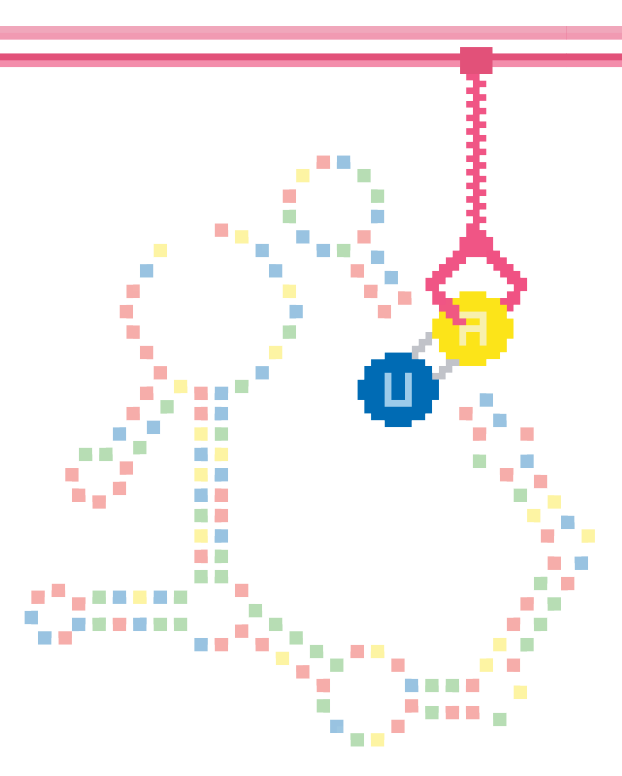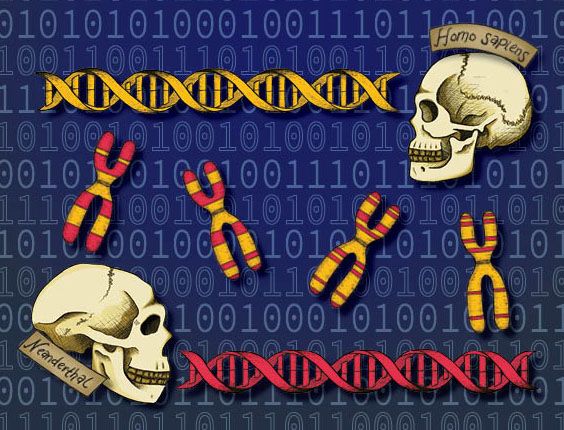Winning a game of life
Citizen scientists tackle core questions in RNA biology

Biology research has a lofty and fantastical promise: understanding basic biological mechanisms on the cellular and molecular levels enables us to craft novel medicines and treatments. It is a good day when a doctor can recognize how our symptoms arise from a process in our bodies gone wrong. It is a life-saving day when that system is understood well enough for scientists to have developed treatments to fix them, like a mechanic repairing a car. The fundamental unit in our bodies is the cell, a warehouse full of machines that create and use materials that fit together to carry out life. Oftentimes, diseases and conditions are caused by pathways in these components having run amok. Each of these pieces inspires entire institutions and their research.
Here enters player number one of this story: the Center for Genetically Encoded Materials (C-GEM), a research center at UC Berkeley, funded by the National Science Foundation. One of their focuses is the properties of ribonucleic acid (RNA), which plays a known role in many diseases. RNA is made of a single long thread, whereas its better-known sibling deoxyribonucleic acid (DNA) is made of two strands. RNA is analogous to a traveling instruction manual; machines within the cell create RNA by copying specific segments of DNA, then these leaflets are sent off to cellular facilities that await instruction.
As RNA is formed, the filament twists and turns, sticking to itself like a piece of long scotch tape. This self-adhesion is referred to as folding and can result in many origami-like shapes. “There are a lot of structural components of RNA that give it a wide variety of functions,” explains Héctor Torres Vera, a graduate student in a group within C-GEM. These structures dictate all aspects of how the RNA is used, from how it binds onto molecules to where it travels in the cell. “We are really interested in understanding that on a fundamental level,” summarizes Torres Vera.

How, then, can one predict and understand how RNA shapes emerge as the strand is built? This is a core motivation for research at C-GEM. Even though there are only a few nucleotides, the building blocks of RNA, “there is so much variety.” Torres Vera emphasizes, “It is really difficult to predict structures formed in RNA ... we don’t really know exactly what this part is always doing, why is this part changing in some cases and isn’t changing in others?” This situation is really a puzzle in disguise: given the few possible nucleotide pieces and some rules from chemistry, can we construct a piece of RNA with the right skeleton and gain insight into when and why it might malfunction?
Here enters player two of this story: EteRNA, an online platform where scientists can translate their research problems into online puzzles. These challenges are open to any internet-goer, aka “citizen scientist,” who can try their hand at digitally sculpting RNA piece by piece. Scientists can interface the results of the game with their laboratory experiments to create new directions for research. According to their website, EteRNA has resulted in over 60,000 players contributing to scientific publications, many of which have players as coauthors.
One scientist leading the charge in utilizing EteRNA for her research at C-GEM is Tiyaporn Tangpradabkul, a graduate student who researches structures within the ribosome, a protein assembly site that is largely made of RNA. Tangpradabkul is interested in a specific part of the ribosome, called the peptidyl transferase center (PTC). The PTC is found throughout life on Earth and plays a central role in creating proteins by binding together its constituents, and it could be relevant for conditions where protein formation goes wrong. “It’s a complex macromolecular machine,” she clarifies, but her research concerns specific segments within the PTC. “We would just like to isolate some regions,” notes Tangpradabkul, “but it is hard to handle.” The approach of her research is to mimic the portion of interest by designing a piece of RNA from scratch. If her manufactured RNA folds into the same shape as the target, it will have a similar function, and she can study how it works with control. She started this research by creating an initial design, then synthesizing it in lab. “It got around 87 percent of the structures that we actually want,” says Tangpradabkul, but that 13 percent can make a big difference.
To improve the numbers, she translated her problem into a puzzle on EteRNA. Creating the challenge and gathering results is streamlined to help scientists get the ball rolling quickly. “They basically have templates for it,” Tangpradabkul recalls. “It can be a fast process.” Once the challenge was online for a few weeks, EteRNA’s internal algorithms simulated how the hundreds of submissions might fold in reality. The players use this insight to vote on the submissions and rank the designs amongst themselves. Finally, the top eight scores were synthesized in the lab. “Seeing it is very exciting,” remembers Tangpradabkul. “I found that a lot of active players think the way scientists would think.” After the experiments were done, there was a town hall at which dozens of players showed up. There, the results of the experiments were announced, and the players could ask questions about why some designs worked and others failed. In the end, an EteRNA veteran player named Eli Fisker designed a sequence that managed to replicate a whopping 92 percent of the desired structures when Tangpradabkul fabricated it in lab.
Though few might expect online puzzle gaming to synergize with basic science research, collaborations between C-GEM and EteRNA are sprinting with the idea. EteRNA enables scientists to harness these passionate communities to consider out-of-the-box solutions that specialized scientists might not see. The work of citizen scientist gamers on EteRNA has led to publications in premiere academic journals, and these puzzle solvers have even outperformed state-of-the-art algorithms developed by the scientific community. Though these games are far removed from human medical treatments, one can imagine a day when an untreatable disease becomes manageable all thanks to a breakthrough catalyzed by people who play puzzles online for fun.
Anyone with internet access can participate in EteRNA’s work. Visit eternagame.org to begin.
This article is part of the Fall 2023 issue.




